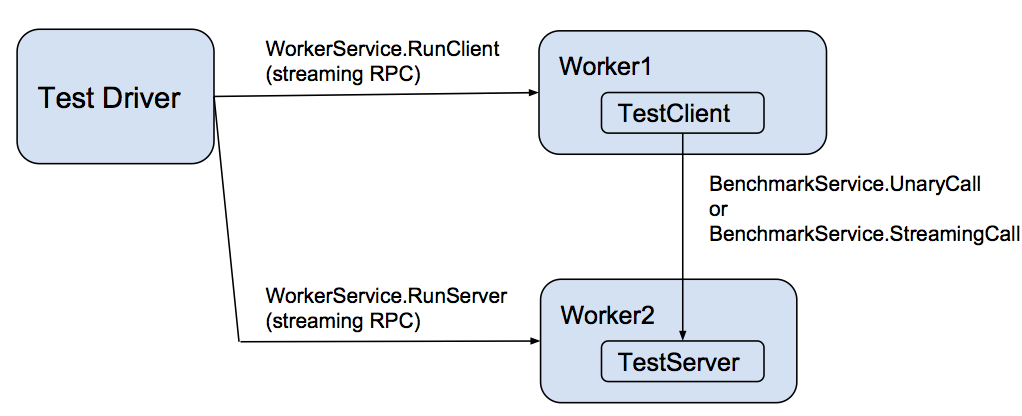Guides
- What is gRPC?
- gRPC Concepts
- Authentication
- Error handling and debugging
- Benchmarking
- gRPC Wire format
Related Guides
- Protocol Buffers
gRPC is designed to support high-performance open-source RPCs in many languages. This document describes the performance benchmarking tools, the scenarios considered by the tests, and the testing infrastructure.
Overview
gRPC is designed for both high-performance and high-productivity design of distributed applications. Continuous performance benchmarking is a critical part of the gRPC development workflow. Multi-language performance tests run hourly against the master branch, and these numbers are reported to a dashboard for visualization.
- Multi-language performance dashboard @latest_release (lastest available stable release)
- Multi-language performance dashboard @master (latest dev version)
- C++ detailed performance dashboard @master (latest dev version)
Additional benchmarking provides fine grained insights into where CPU is spent.
- C++ full-stack microbenchmarks
- C Core filter benchmarks
- C Core shared component benchmarks
- C Core HTTP/2 microbenchmarks
Performance testing design
Each language implements a performance testing worker that implements a gRPC WorkerService. This service directs the worker to act as either a client or a server for the actual benchmark test, represented as BenchmarkService. That service has two methods:
- UnaryCall - a unary RPC of a simple request that specifies the number of bytes to return in the response
- StreamingCall - a streaming RPC that allows repeated ping-pongs of request and response messages akin to the UnaryCall

These workers are controlled by a driver that takes as input a scenario description (in JSON format) and an environment variable specifying the host:port of each worker process.
Languages under test
The following languages have continuous performance testing as both clients and servers at master:
- C++
- Java
- Go
- C#
- node.js
- Python
- Ruby
Additionally, all languages derived from C core have limited performance testing (smoke testing) conducted at every pull request.
In addition to running as both the client-side and server-side of performance tests, all languages are tested as clients against a C++ server, and as servers against a C++ client. This test aims to provide the current upper bound of performance for a given language’s client or server implementation without testing the other side.
Although PHP or mobile environments do not support a gRPC server (which is needed for our performance tests), their client-side performance can be benchmarked using a proxy WorkerService written in another language. This code is implemented for PHP but is not yet in continuous testing mode.
Scenarios under test
There are several important scenarios under test and displayed in the dashboards above, including the following:
- Contentionless latency - the median and tail response latencies seen with only 1 client sending a single message at a time using StreamingCall
- QPS - the messages/second rate when there are 2 clients and a total of 64 channels, each of which has 100 outstanding messages at a time sent using StreamingCall
- Scalability (for selected languages) - the number of messages/second per server core
Most performance testing is using secure communication and protobufs. Some C++ tests additionally use insecure communication and the generic (non-protobuf) API to display peak performance. Additional scenarios may be added in the future.
Testing infrastructure
All performance benchmarks are run as instances in GCE through our Jenkins testing infrastructure. In addition to the gRPC performance scenarios described above, we also run baseline netperf TCP_RR latency numbers in order to understand the underlying network characteristics. These numbers are present on our dashboard and sometimes vary depending on where our instances happen to be allocated within GCE.
Most test instances are 8-core systems, and these are used for both latency and QPS measurement. For C++ and Java, we additionally support QPS testing on 32-core systems. All QPS tests use 2 identical client machines for each server, to make sure that QPS measurement is not client-limited.